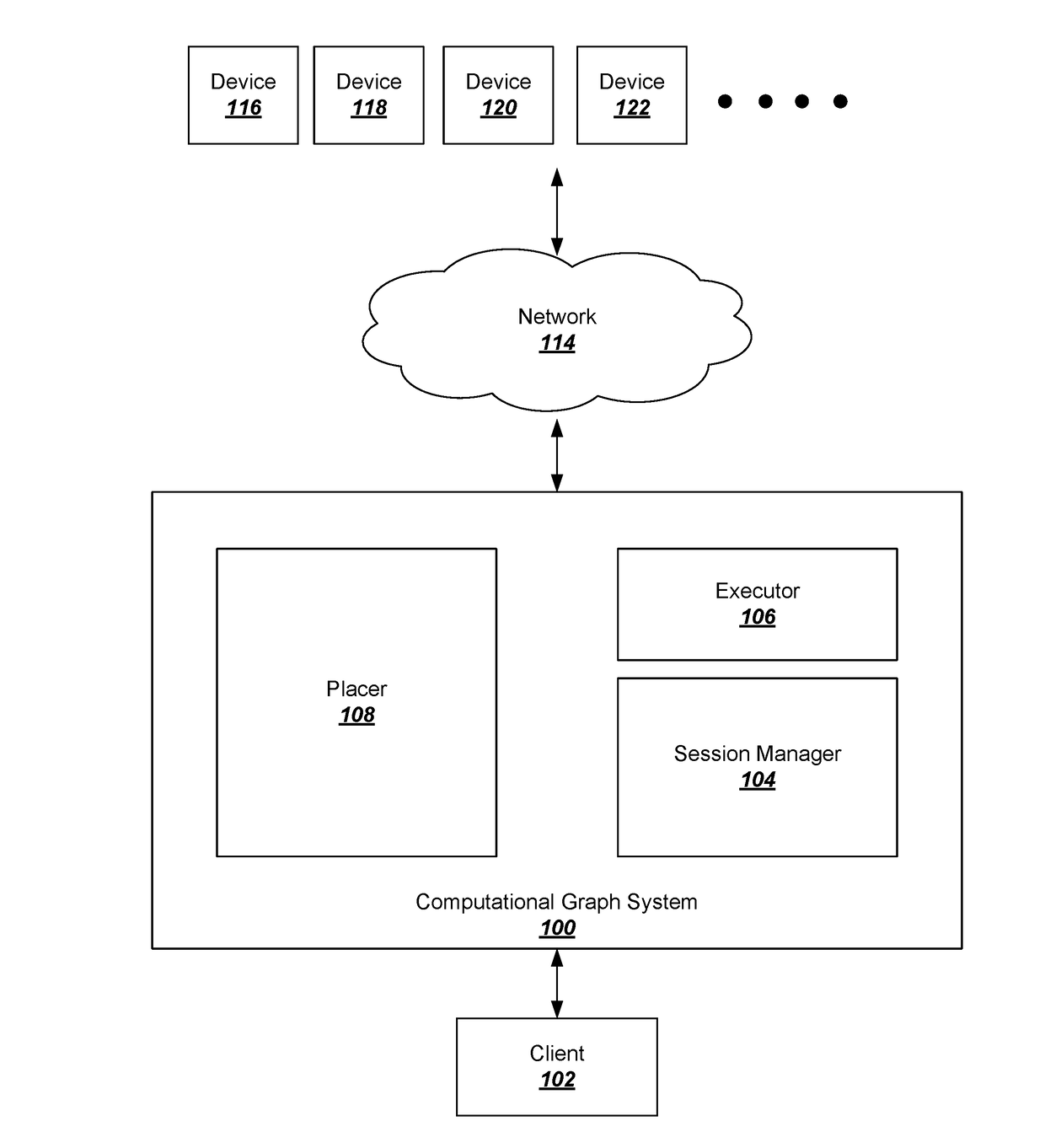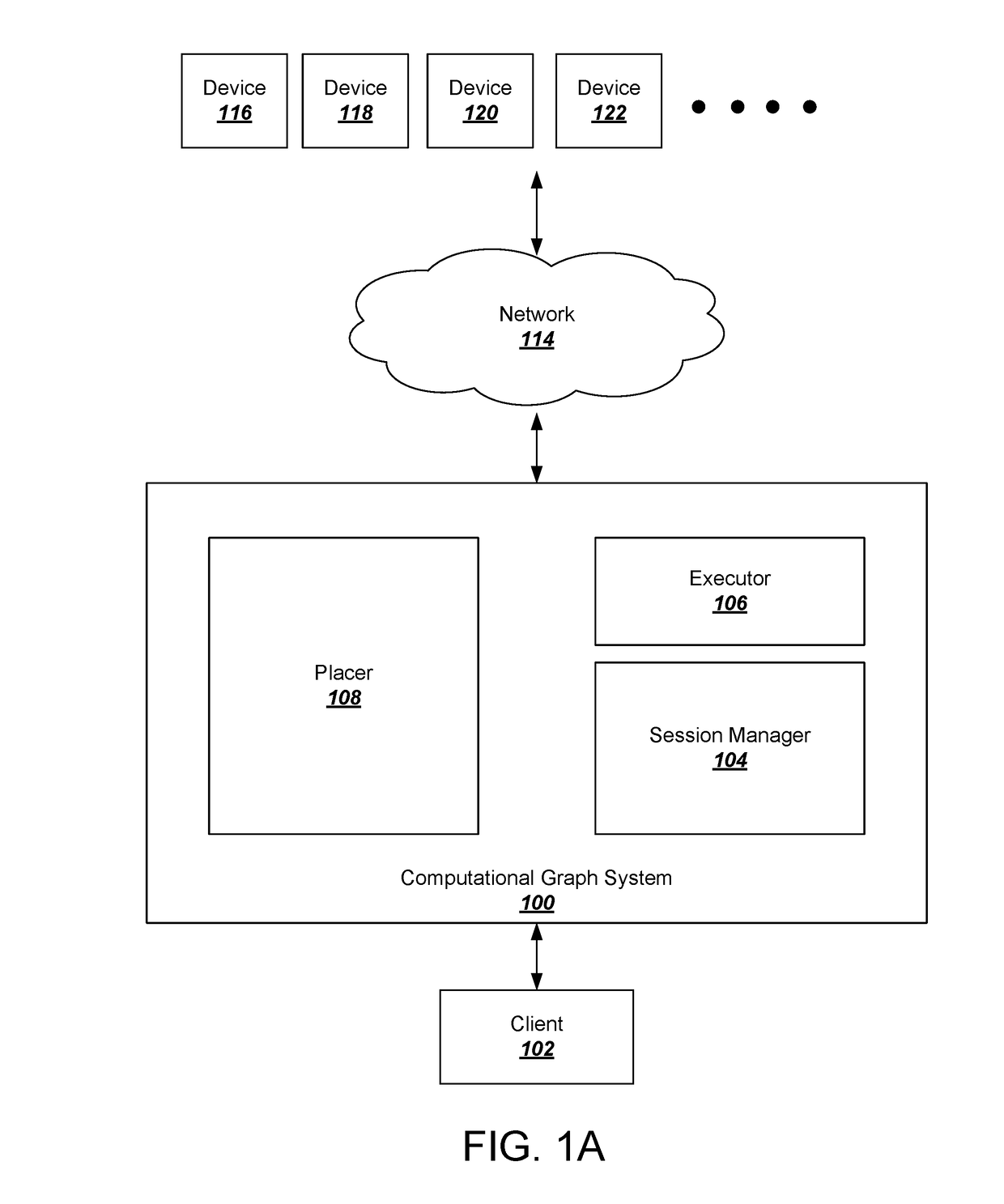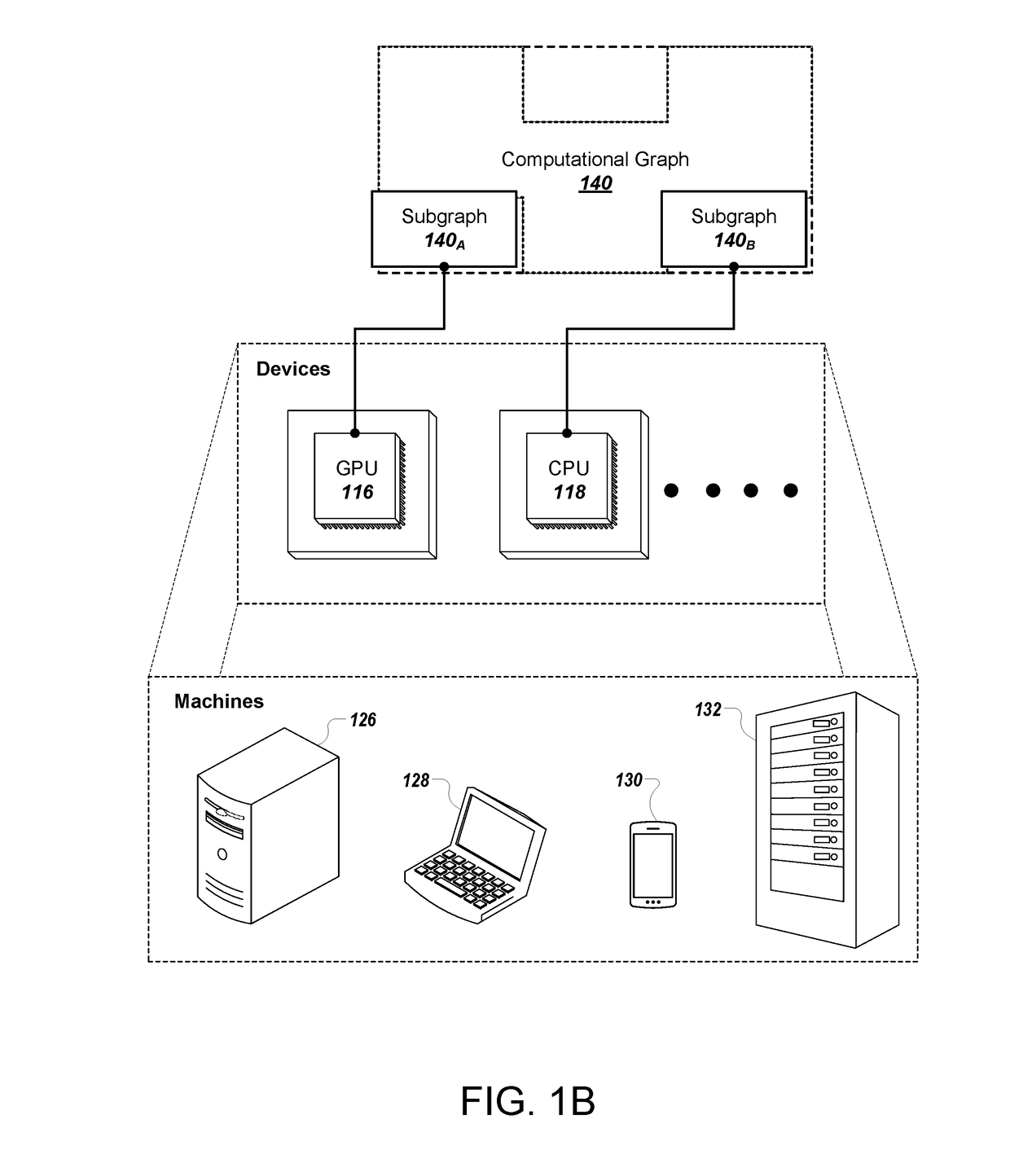Training neural networks represented as computational graphs
a neural network and computational graph technology, applied in the field of training neural networks, can solve the problems that devices can take a significant amount of time to process the layers of neural networks
- Summary
- Abstract
- Description
- Claims
- Application Information
AI Technical Summary
Benefits of technology
Problems solved by technology
Method used
Image
Examples
Embodiment Construction
[0025]This specification generally describes a computational graph system that performs operations represented by a computational graph in a distributed manner. Particularly, this specification describes techniques for augmenting a computational graph to generate a training computational graph for training a neural network using a machine learning training algorithm. More particularly, such techniques describe computing a gradient of an objective function with respect to each of the parameters of the neural network when the objective function contains cyclical control flow constructs. An example algorithm uses backward propagation of errors, known as backward propagation, in conjunction with an optimization method to compute these gradients. Backward propagation requires differentiation of an objective function, e.g., a cost function or a loss function, with respect to each of the parameters of a neural network that can be complicated when the objective function contains control flo...
PUM
 Login to View More
Login to View More Abstract
Description
Claims
Application Information
 Login to View More
Login to View More - R&D
- Intellectual Property
- Life Sciences
- Materials
- Tech Scout
- Unparalleled Data Quality
- Higher Quality Content
- 60% Fewer Hallucinations
Browse by: Latest US Patents, China's latest patents, Technical Efficacy Thesaurus, Application Domain, Technology Topic, Popular Technical Reports.
© 2025 PatSnap. All rights reserved.Legal|Privacy policy|Modern Slavery Act Transparency Statement|Sitemap|About US| Contact US: help@patsnap.com



